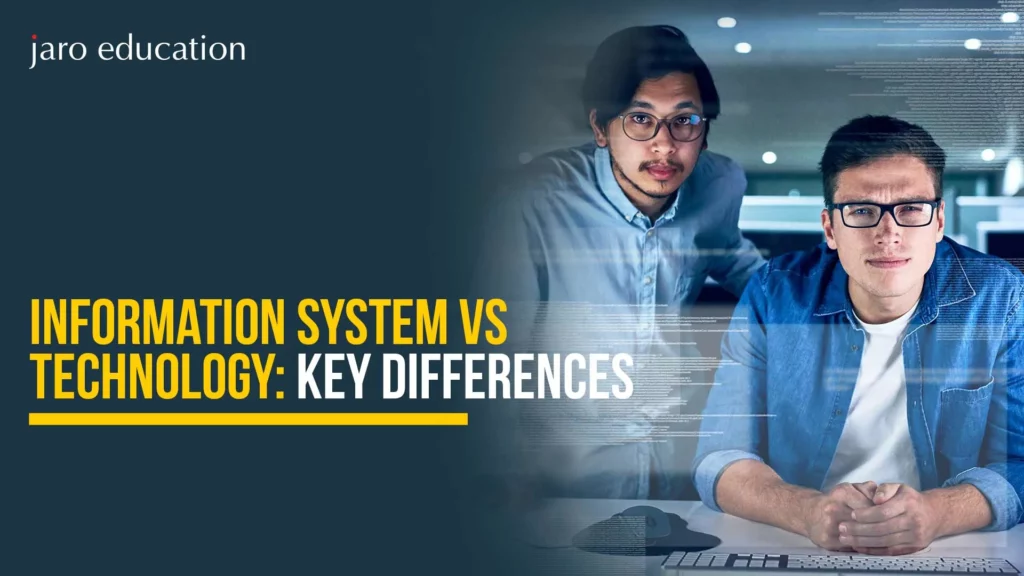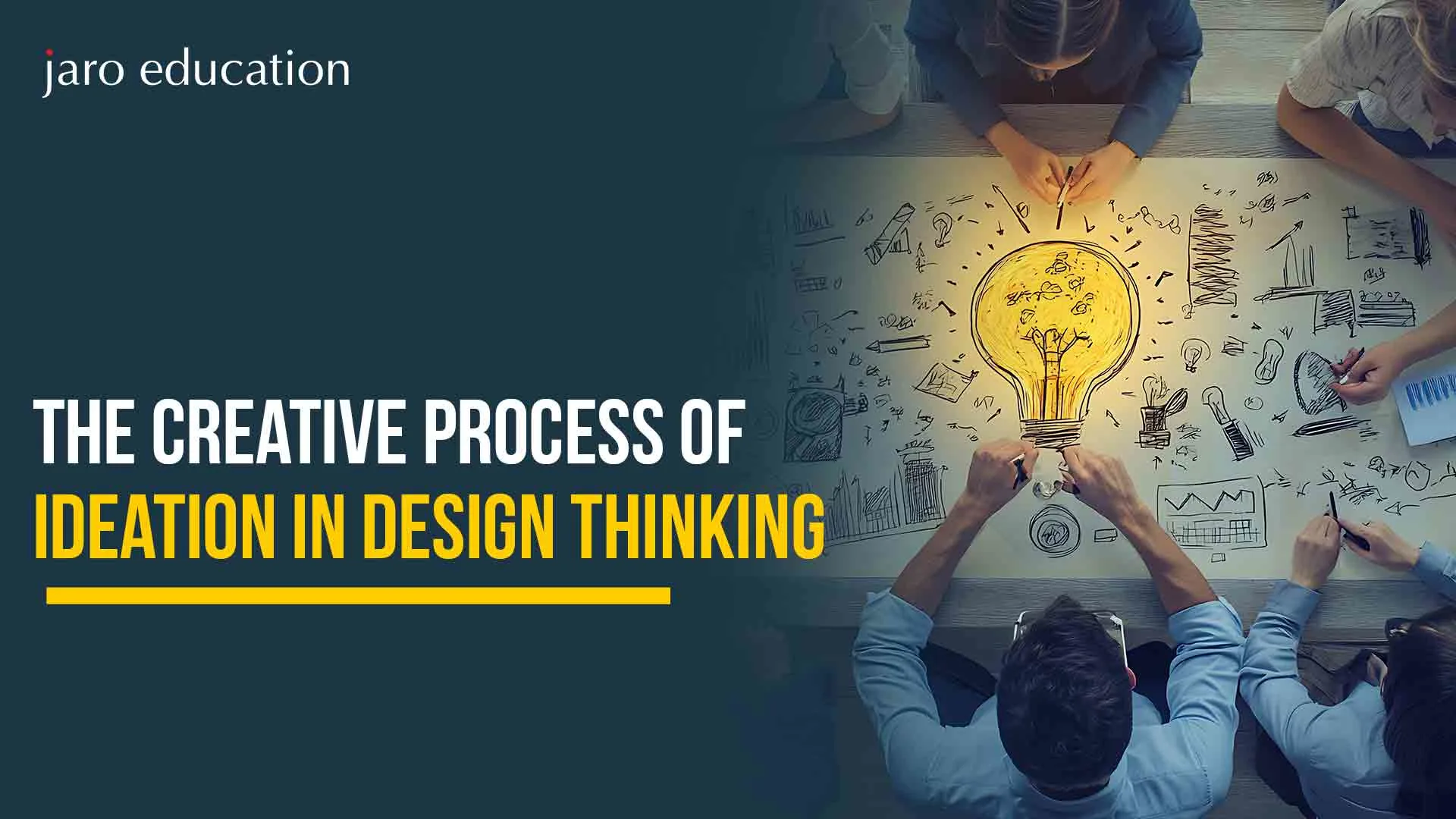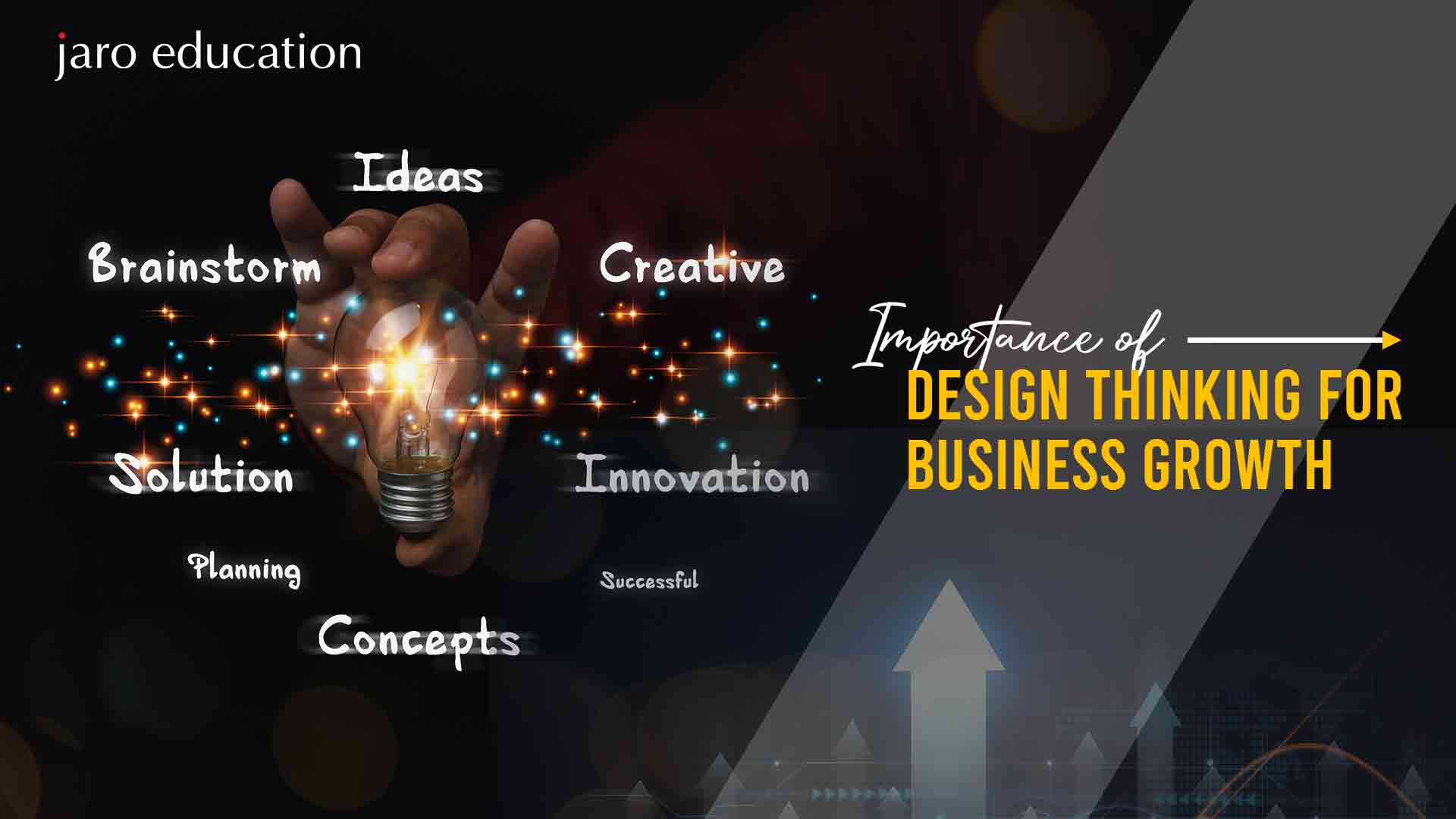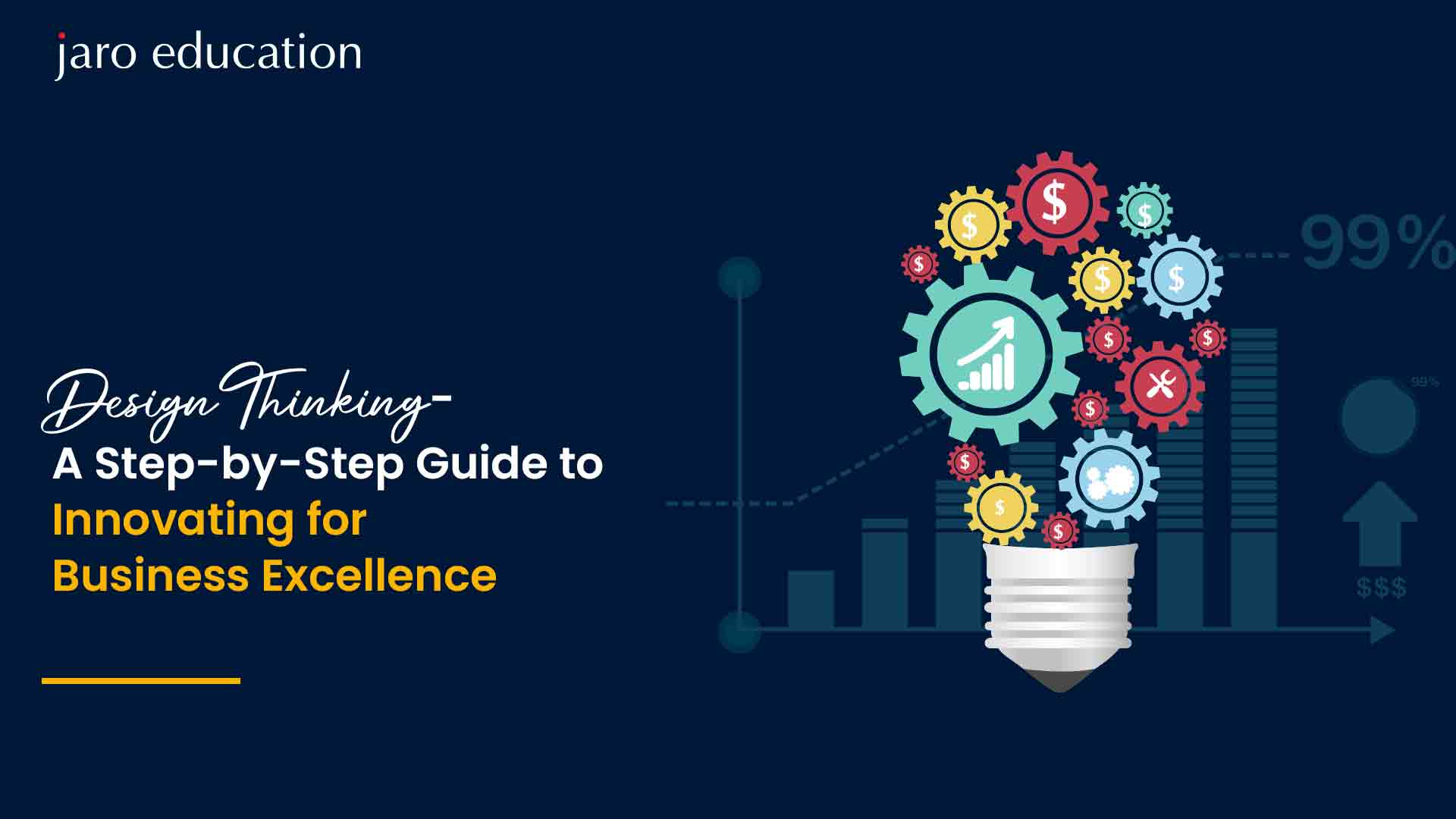Design Thinking: What Is It and Why Does It Matter?
Table of Contents
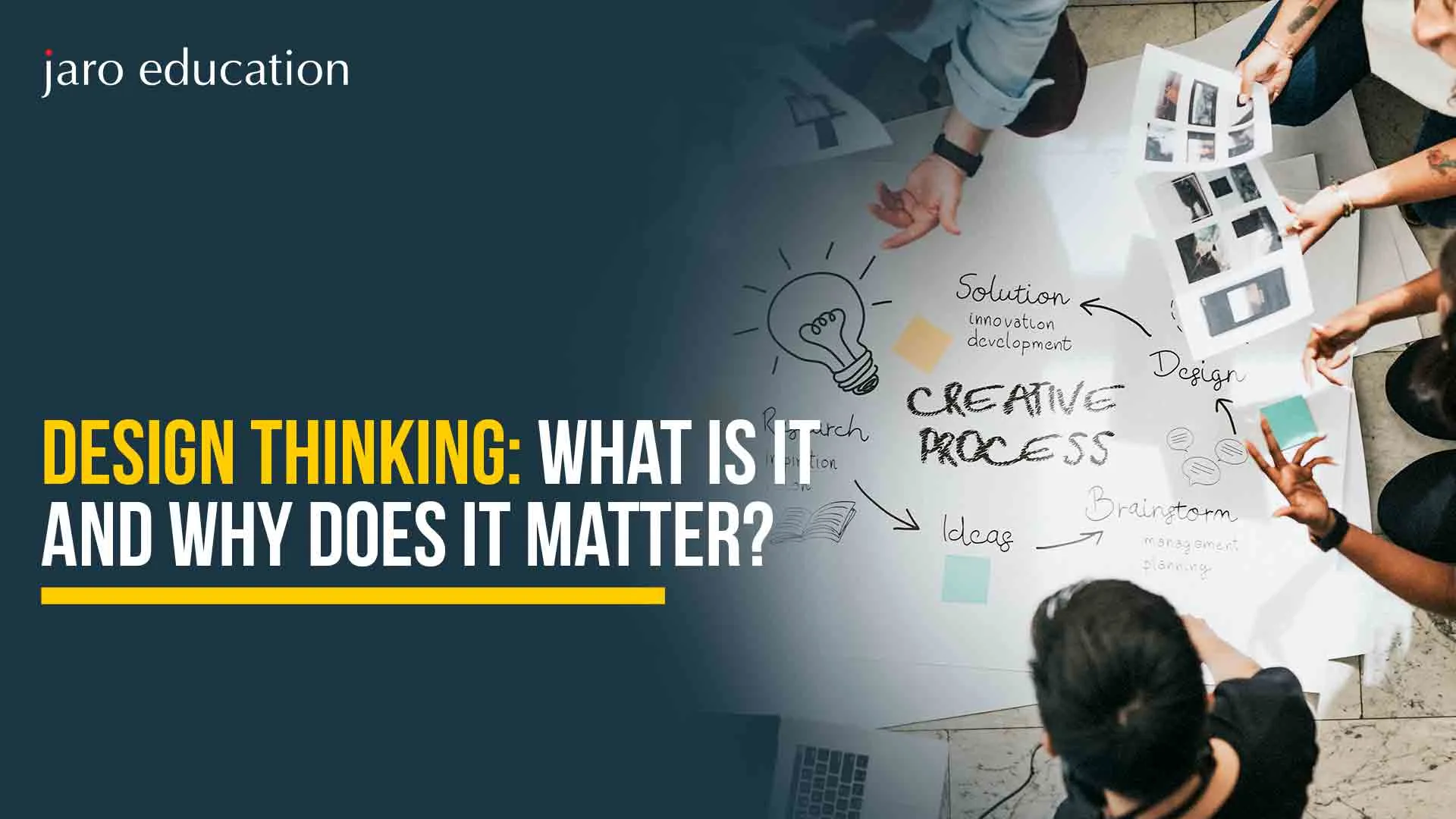
In a world characterised by constant change, rising customer expectations, and increasingly complex problems, traditional problem-solving approaches are no longer sufficient. Organisations, teams, and leaders are seeking more human-centred, innovative methodologies to tackle these challenges. This is where design thinking comes into play.
Design thinking is not just a buzzword or a trendy method; it is a profound shift in how we understand and solve problems. Whether you’re developing a new product, improving a service, optimising internal processes, or simply trying to better understand your users, design thinking offers a structured yet flexible framework to spark innovation.
In this article, we’ll explore design thinking meaning, its core components, the design thinking process, design thinking principles, real-world design thinking examples, and the overall importance of design thinking in modern business, education, healthcare, and beyond.
What Is Design Thinking?
Let’s begin by unpacking the design thinking meaning in its most essential form. Design thinking is a human-centred approach to innovation that draws from the designer’s toolkit to integrate the needs of people, the possibilities of technology, and the requirements for business success. It is a solution-based method that prioritises empathy, experimentation, and iteration.
The design thinking meaning lies in its goal to deeply understand the user’s problems before jumping into solutions. It encourages diverse, cross-functional collaboration and embraces ambiguity and failure as steps toward progress.
Unlike linear models, design thinking is iterative, flexible, and focused on collaboration between designers and users. Its principles can be applied across industries—from startups and corporate giants to non-profits and educational institutions.
Origins and Evolution of Design Thinking
To truly grasp the importance of design thinking, it’s useful to understand its origins.
Although the term “design thinking” gained mainstream traction in the 2000s, its roots go back to the 1960s, when design theorists began advocating for design as a way of thinking. In the 1990s, institutions like Stanford’s d.school and design firms like IDEO played pivotal roles in formalising and popularising the design thinking process.
Since then, the concept has evolved beyond the realm of designers and is now a staple in business strategy, software development, social innovation, and even government policy-making. It’s increasingly seen as a vital mindset and toolkit for anyone tasked with solving complex problems creatively and collaboratively.

*strapi.lizard.global
Why Design Thinking Matters?
The importance of design thinking in today’s fast-paced, customer-centric world cannot be overstated. Here’s why:
Empathy Drives Better Outcomes
One of the core design thinking principles is empathy—deeply understanding the users’ needs, pain points, behaviours, and emotions. When companies truly empathise with their customers, they are better positioned to create products and services that meet real needs rather than perceived ones.
Innovation Becomes Accessible
You don’t need to be a designer to engage in design thinking. It democratises innovation by offering a clear process and mindset that anyone can adopt, regardless of their background or role.
Complex Problems Become Manageable
Many of today’s challenges are what experts call “wicked problems”—issues that are ill-defined, interconnected, and constantly evolving. The design thinking process offers a way to make sense of this complexity through structured exploration, ideation, and prototyping.
Collaboration and Diversity Are Amplified
Cross-functional teams thrive under a design thinking model. Engineers, marketers, designers, and business leaders all bring different perspectives that contribute to more holistic solutions.
Fail Fast, Learn Faster
Design thinking encourages rapid prototyping and frequent iteration, reducing the risk of investing time and resources into the wrong solution. Failures are reframed as learning opportunities—a crucial mindset shift in innovation-driven environments.
These elements make the importance of design thinking increasingly apparent across industries and sectors.
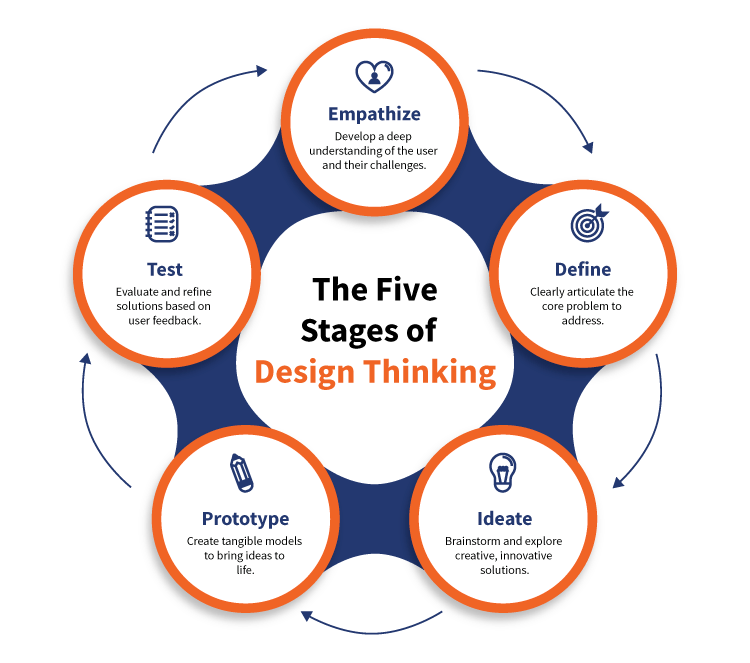
*badrukaschoolofmanagement.edu.in
Five Stages of Design Thinking Process
The design thinking process is typically broken into five stages. These aren’t always linear; teams may move back and forth between steps depending on what they learn.
Empathise
At the heart of the design thinking process is empathy. This phase involves immersing yourself in the user’s environment and observing how they interact with their world. Techniques include user interviews, shadowing, surveys, and ethnographic research.
Define
Here, teams synthesise their observations to define the core problem. A good problem statement is human-centred, broad enough to allow creativity but narrow enough to be manageable. Defining the problem correctly is critical, as it frames all subsequent work.
Ideate
In this creative phase, teams generate as many ideas as possible. Brainstorming, mind mapping, sketching, and role-playing are common activities. No idea is too wild—quantity leads to quality. The goal is to think beyond obvious solutions.
Prototype
This stage involves creating low-fidelity, inexpensive versions of your ideas. These prototypes could be sketches, models, storyboards, or digital mockups. Prototypes help make abstract ideas tangible so they can be tested and improved.
Test
In the final phase, users interact with the prototypes. Feedback is gathered to refine and improve the concept. Often, teams loop back to earlier stages, as new insights emerge that shift their understanding of the problem or solution.
Together, these stages form the backbone of the design thinking process and demonstrate how adaptable, user-focused innovation can be achieved.
Core Design Thinking Principles
The design thinking principles are the philosophical backbone of the methodology. These aren’t rigid rules but rather guiding values that influence how the process unfolds.
Human-Centredness
Everything begins with the user. Understanding the human experience is central to uncovering real needs and creating meaningful solutions.
Empathy
Empathy allows designers and problem-solvers to connect with users on a deep level. This connection is what distinguishes design thinking from more analytical approaches.
Collaboration
Diverse teams outperform homogeneous ones in creative problem-solving. Design thinking promotes interdisciplinary collaboration to explore different viewpoints.
Experimentation
Trying out ideas quickly helps expose flaws and opportunities early in the process. A culture of experimentation encourages taking risks and thinking outside the box.
Iteration
Rarely is the first idea the best one. Iteration is about continually refining and improving ideas based on feedback and new insights.
These design thinking principles offer a mindset that supports agility, innovation, and responsiveness to change—qualities that are essential in today’s world.
Real-World Design Thinking Examples
To better grasp the importance of design thinking, let’s explore some impactful design thinking examples from various industries. These cases demonstrate how design thinking drives innovation, enhances user experience, and solves complex problems.
Airbnb: Turning a Struggling Startup into a Unicorn
In its early days, Airbnb struggled to gain traction. The team applied design thinking by empathising with users and identifying a key issue—poor listing photos. Instead of a technical solution, they manually visited hosts to take professional photos. This shift led to a dramatic boost in user trust and bookings. It’s a classic design thinking example where empathy and reframing the problem led to a transformative result.
IBM: Scaling Innovation Across a Global Enterprise
IBM adopted design thinking across its teams, training over 100,000 employees. They embedded design thinking principles like user empathy and collaboration into their workflows. As a result, project timelines were cut in half and user satisfaction improved significantly. This shows the importance of design thinking at scale.
GE Healthcare: Designing for Pediatric Patients
GE used design thinking to redesign MRI experiences for children. Instead of intimidating machines, the rooms were transformed into imaginative adventure zones, like pirate ships or space journeys. The emotional needs of young patients and their parents were placed at the centre, showcasing powerful design thinking principles in action.
Bank of America: Simplifying Savings with "Keep the Change"
Bank of America applied design thinking to help customers save money painlessly. The “Keep the Change” program rounds up purchases and deposits the difference into savings accounts. By understanding user behaviour and desires, they created a win-win solution—one of the most relatable design thinking examples in banking.
Stanford d.school & Global Health: Clean Water in Kenya
Students and health organisations applied design thinking to address waterborne illnesses in Kenya. They co-created solutions with local communities, resulting in simple, affordable chlorination devices. This highlights the importance of design thinking in humanitarian and global health contexts.
Misconceptions About Design Thinking
Despite its popularity, there are several misconceptions about design thinking that need to be addressed.
It's Only for Designers
While rooted in design, the design thinking process is for everyone, from CEOs to teachers to engineers. Its strength lies in its adaptability across roles and sectors.
It’s Just a Buzzword
Some dismiss design thinking as trendy jargon. However, its widespread success and long-standing theoretical foundation prove it’s more than hype. When done properly, it delivers real, measurable impact.
It’s Only Useful for Product Development
While common in product and service design, design thinking principles apply to operations, HR, education, urban planning, and more. Any situation that requires creative problem-solving can benefit from this approach.
It’s a One-Time Process
Design thinking is not a “set-it-and-forget-it” tool. It’s an ongoing mindset that should evolve with the user, environment, and objectives. Its iterative nature makes it a living, breathing part of organisational culture.
Embedding Design Thinking in Organisational Culture
The true importance of design thinking is realised when it’s ingrained in a company’s DNA. Here’s how organisations can build a design thinking culture:
Leadership Support
Leadership must champion design thinking principles, providing the resources and support needed to experiment and fail without fear.
Cross-Functional Collaboration
Break down silos and encourage diverse teams. Bring together marketers, developers, designers, finance experts, and end-users to collaborate from day one.
Continuous Learning
Invest in design thinking training workshops, toolkits, and certification programs. Encourage team members to continuously sharpen their skills.
Customer Co-Creation
Treat customers as co-designers. Involve them in ideation, prototyping, and testing phases. This builds trust and ensures relevance.
Space for Creativity
Foster physical and digital spaces that encourage creativity and experimentation. These environments enable free thinking and facilitate innovation.
Tools and Resources for Practising Design Thinking
Here are some common tools and methods used throughout the design thinking process:
- Empathy Maps: Visual tools to understand users’ thoughts, feelings, and actions.
- Journey Maps: Diagrams that outline a user’s experience over time.
- Personas: Fictional characters representing different user types.
- Brainstorming Sessions: Structured creativity workshops.
- Prototyping Kits: Materials (physical or digital) to create early models of solutions.
- Feedback Loops: Regular reviews to gather input and refine ideas.
You can also explore platforms like Miro, Figma, and Mural, which offer digital whiteboards for collaborative design thinking exercises.
Future of Design Thinking
The importance of design thinking will only grow as organisations continue to face complex, user-centred challenges. Here’s what the future may hold:
Integration with AI and Big Data
Emerging technologies will augment the design thinking process, providing richer insights through behavioural analytics, sentiment analysis, and predictive modelling.
Design Thinking in Education
Schools and universities are incorporating design thinking principles into curricula to teach critical thinking, empathy, and creativity. This shift prepares the next generation to lead with innovation.
Greater Inclusion and Accessibility
The future of design thinking will emphasise inclusivity—designing not just for users but with them, regardless of ability, background, or geography.
Sustainability-Focused Innovation
As climate change becomes more urgent, design thinking will play a crucial role in designing sustainable solutions that benefit both people and the planet.
Global Collaboration
With remote tools and global connectivity, cross-border design thinking teams will become more common. Innovation will be shaped by diverse voices from around the world.
Conclusion
So, what is design thinking, and why does it matter? It’s more than a process—it’s a paradigm shift in how we approach problems, products, and people. The design thinking meaning is rooted in empathy, creativity, and a relentless focus on the user. Its adaptable framework, grounded in real-world relevance, has transformed industries and empowered organisations to innovate responsibly and effectively.
From product design to public health, from startups to governments, the importance of design thinking lies in its ability to simplify complexity, encourage experimentation, and deliver user-centred outcomes. By embracing design thinking principles and applying the design thinking process, individuals and organisations alike can unlock meaningful innovation and long-term success. And with countless design thinking examples proving its value across sectors, the call to action is clear: don’t just solve problems—redefine them with design thinking.
Frequently Asked Questions
Can Design Thinking be used in remote or virtual team settings?
Yes, design thinking can be effectively applied in remote settings using digital collaboration tools such as Miro, Mural, Figma, and Zoom. These platforms support virtual brainstorming, prototyping, and user testing, allowing global teams to collaborate asynchronously or in real-time.
How does Design Thinking differ from Agile and Lean methodologies?
While all three promote iterative development and user-centric approaches, design thinking focuses on understanding human needs and defining the right problem to solve. Agile emphasises quick delivery and continuous improvement, whereas Lean concentrates on minimising waste and optimising processes. They can complement each other in a broader innovation strategy.
What industries are currently underutilising Design Thinking?
While tech, healthcare, and education have widely adopted design thinking, industries like manufacturing, construction, and legal services have been slower to integrate it. These sectors could greatly benefit from applying design thinking principles to improve client experiences and operational efficiency.
Can Design Thinking be self-taught, or is formal training necessary?
Design thinking can absolutely be self-taught through books, online courses, and hands-on projects. However, formal training or workshops can accelerate learning, especially when facilitated by experienced practitioners who offer feedback and mentorship.
What are some common challenges in implementing Design Thinking in large organisations?
Large organisations often face resistance to cultural change, siloed departments, a lack of leadership buy-in, and short-term ROI expectations. Overcoming these requires executive sponsorship, cross-functional collaboration, and embedding design thinking into the company’s core values and processes.








